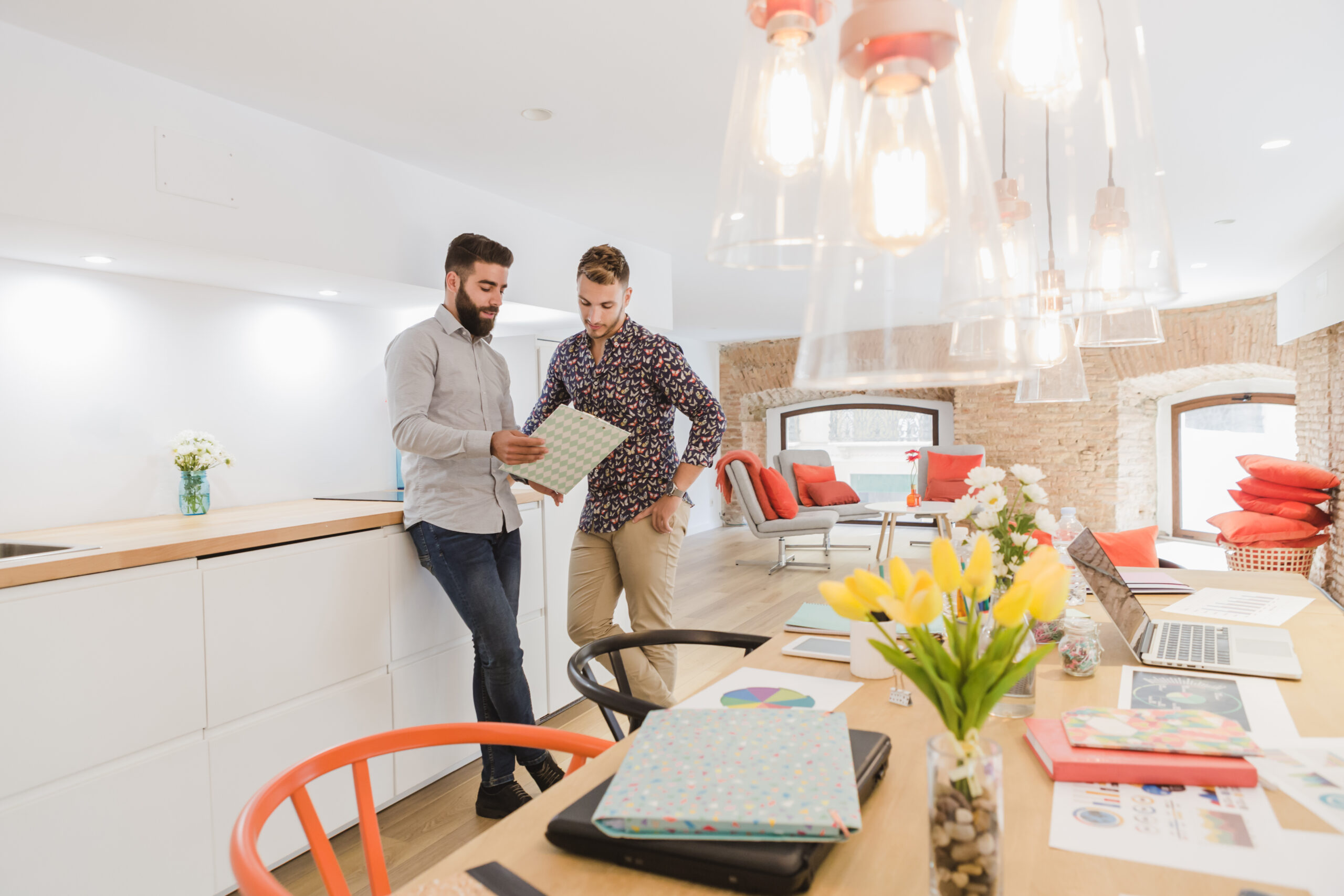The home has always been a reflection of identity; our comfort zone, our retreat, and increasingly, our workspace. Over the last few years, homeowners have been re-evaluating what “home” really means. It’s no longer just a place to rest, but an adaptable environment that can inspire productivity, relaxation, and connection.
Today’s home transformations aren’t just about aesthetic refreshes, they’re about crafting spaces that respond to changing lifestyles, sustainability concerns, and the desire for smarter living. Below, we explore the leading design and renovation trends reshaping homes for 2025 and beyond, with practical insights on how to implement them effectively.
- The Rise of Open-Plan Living and Why It Still Works
Open-concept living isn’t new, but its philosophy has evolved. What started as a movement to knock down walls has matured into a pursuit of flow, the balance between connectivity and privacy.
Modern open-plan layouts are now more thoughtful. Instead of removing every wall, designers are embracing flexible partitions, glass dividers, and half-walls that allow visual openness while managing acoustics and privacy.
Pro Tip: If you’re remodeling, consider zoning; use rugs, ceiling beams, or subtle lighting shifts to define areas without closing them off. This approach delivers the airiness of an open plan while maintaining structure.
- Biophilic Design: Reconnecting Homes with Nature
Nature’s influence on mental health and productivity is undeniable. The principle of biophilic design creating spaces that nurture our innate connection to nature is becoming standard in modern homes.
Think natural light flooding through skylights, lush indoor plants, stone countertops, and sustainable wood finishes. Even small touches like a live-edge wooden table or indoor herb garden can reduce stress and improve indoor air quality.
Architects now design “green corridors,” indoor courtyards, and even water features that blend seamlessly into everyday living areas.
Pro Tip: Choose materials that evolve gracefully with time, such as reclaimed wood, cork, and rattan. They not only look beautiful but carry a sustainability story homeowners can be proud of.
- Smart Living: Technology with Taste
Smart homes used to be defined by flashy gadgets. Now, the focus is on integration, tech that disappears into design. From adaptive lighting and automated blinds to energy-efficient climate control, the best smart systems operate quietly in the background, enhancing comfort without distraction.
Homeowners are increasingly using AI-driven tools to analyze energy consumption and optimize appliance use. Smart thermostats, irrigation systems, and security cameras are evolving into ecosystems that learn habits over time, reducing waste and adding peace of mind.
Pro Tip: Begin small, smart plugs and lighting systems that connect to your phone can quickly modernize a home without full rewiring.
- The Power of Texture and Color
Minimalism has dominated interior design for a decade, but 2025 is bringing a new wave of expressive interiors. Instead of stark whites and grays, homeowners are layering earthy neutrals, deep blues, olive greens, and amber tones colors that convey warmth and sophistication.
Texture is equally vital. Fluted wood panels, matte stone tiles, and tactile fabrics like boucle or linen introduce depth to otherwise simple spaces. Designers recommend combining two or three contrasting materials, say, a polished marble counter paired with raw timber shelving for balanced visual intrigue.
Pro Tip: Accent ceilings are trending. Painting or wallpapering the ceiling in a bold color draws the eye upward, creating drama without clutter.
- Outdoor Extensions: Turning Decks into Everyday Luxury
Outdoor living has transcended the concept of seasonal use, it’s now a year-round lifestyle statement. A thoughtfully designed deck acts as an architectural bridge between indoors and out, expanding both the functionality and value of the home.
The modern deck isn’t just a slab of wood; it’s an experience. Homeowners are installing built-in seating, pergolas, LED lighting, and even integrated outdoor kitchens to make decks usable day and night, through every season.
“A well-planned deck creates more than extra square footage, it creates a new dimension of living,” notes one outdoor design expert. “It’s where people gather, unwind, and connect.”
One example comes from US Quality of Lexington, a specialist in custom deck design and installation. Using sustainable composite decking and a minimalist railing system, they achieved a clean, modern aesthetic that seamlessly matched the home’s architectural lines.
Instead of treating the deck as an afterthought, they designed it as a continuation of the interior with matching flooring tones and lighting that extends from the living room to the outdoor space. The result? A cohesive, fluid transition that looks intentional and elevates daily living.
This kind of craftsmanship exemplifies where home improvement is headed: personalization with purpose, beauty grounded in practicality.
Pro Tip: When planning a deck, consider orientation for sunlight, choose low-maintenance materials like composite or pressure-treated wood, and integrate lighting early in the design phase for a polished final look.
- Sustainable Luxury: Eco-Friendly Can Still Feel Opulent
Homeowners are realizing that luxury and sustainability are not opposites; they’re partners. Solar panels, rainwater harvesting systems, and energy-efficient HVAC units are being framed as design features rather than hidden utilities.
Natural stone, bamboo, recycled glass tiles, and reclaimed wood are replacing synthetic alternatives. Even high-end furniture brands are turning to responsibly sourced fabrics and finishes.
Pro Tip: Opt for multi-use furniture made from renewable materials. It reduces waste and future-proofs your space against changing trends.
- Adaptive Spaces for Modern Lifestyles
With more people working remotely or managing multi-generational households, flexibility has become the new design luxury.
Convertible rooms such as offices that double as guest bedrooms are gaining traction. Movable walls, Murphy beds, and modular furniture systems are allowing homes to adapt quickly to changing needs.
Pro Tip: Use sliding panels or pivoting doors to open or close spaces as needed. Combine this with smart lighting that changes color temperature from “focus” to “relax” modes for different activities.
- Light as a Design Language
Lighting is no longer purely functional, it’s emotional. The right lighting design can alter mood, expand perception of space, and highlight architectural features.
In 2025, layered lighting reigns supreme: ambient for overall illumination, task lighting for function, and accent lighting for drama. Smart dimmers and app-controlled systems let homeowners shift easily from bright mornings to cozy evenings.
Pro Tip: Don’t overlook exterior lighting, it enhances safety while transforming a deck or garden into an enchanting nightscape.
- The Return of Craftsmanship
As mass-produced furniture fills the market, a growing segment of homeowners are rediscovering the beauty of bespoke craftsmanship. Hand-carved cabinetry, artisanal tiles, and custom millwork add soul to modern homes.
This movement also supports local economies and reduces supply chain emissions, a win for design and sustainability alike.
Pro Tip: Invest in one or two statement pieces made by local artisans. They’ll serve as conversation starters and long-term heirlooms.
Transforming a home today isn’t about following fleeting trends, it’s about intentional improvement. The goal is to create spaces that are beautiful, functional, sustainable, and emotionally resonant.
Whether you’re knocking down walls, layering materials, or designing an elegant deck with specialists, every choice should enhance how the home feels and functions for years to come.
As 2025 unfolds, one thing is clear: the future of home design lies not in extravagance, but in elevated living where innovation meets authenticity, and every space tells a story worth living in.



































